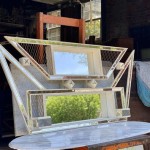How To Screen Mirror iPhone to Laptop or Mac
Screen mirroring, the process of wirelessly duplicating the display of one device onto another, has become an increasingly valuable tool for various applications. Whether it's sharing photos and videos with a larger audience, giving presentations, or simply enjoying mobile games on a more immersive screen, understanding how to mirror an iPhone to a laptop or Mac can significantly enhance digital experiences.
This article provides a comprehensive guide on different methods for screen mirroring an iPhone to both Windows laptops and macOS devices. It will explore both native solutions and third-party applications, outlining the steps, requirements, and potential advantages and disadvantages of each approach. By understanding these options, users can select the method that best suits their specific needs and technical capabilities.
The ability to screen mirror relies on a combination of hardware and software compatibility. Both the sending device (iPhone) and the receiving device (laptop or Mac) must support the necessary protocols and have the required software installed. Moreover, network connectivity plays a crucial role, as most screen mirroring technologies utilize a Wi-Fi network to transmit the video and audio signal.
Understanding AirPlay and Its Limitations on Windows
AirPlay, Apple's proprietary wireless streaming protocol, is the native method for screen mirroring from an iPhone to a Mac. However, AirPlay is not natively supported on Windows. This means that directly mirroring an iPhone to a Windows laptop using only built-in features is not possible. To overcome this limitation, users need to employ third-party applications that emulate or support the AirPlay protocol on Windows machines.
On a Mac, the process is significantly simpler. Assuming both the iPhone and the Mac are connected to the same Wi-Fi network, screen mirroring can be initiated directly from the iPhone's Control Center. The “Screen Mirroring” option allows users to select their Mac from a list of available devices, and the iPhone's display will then be mirrored onto the Mac screen.
It is important to note that for AirPlay to function optimally, a stable and relatively fast Wi-Fi connection is required. Interferences on the Wi-Fi network can lead to lag, buffering, or disconnections. Therefore, ensuring a strong Wi-Fi signal is crucial for a seamless screen mirroring experience. Firewalls on the Mac may also block the connection, requiring adjustments to allow AirPlay traffic.
The key advantage of using AirPlay is its ease of use and seamless integration with Apple's ecosystem. However, the lack of native support on Windows necessitates the exploration of alternative solutions for users of Windows laptops.
Utilizing Third-Party Applications for Screen Mirroring
Given the limitations of AirPlay on Windows, a variety of third-party applications have emerged to bridge the gap and facilitate screen mirroring from an iPhone to a Windows laptop. These applications work by either emulating the AirPlay protocol or using alternative streaming technologies to transmit the iPhone's display to the laptop.
Several popular options include AirServer, Reflector, and LetsView. Each application offers a slightly different set of features and functionalities, but they all share the common goal of enabling screen mirroring between an iPhone and a Windows laptop. Typically, these applications require a one-time purchase or subscription fee.
The process for using these applications generally involves the following steps: First, the user needs to download and install the chosen application on their Windows laptop. Second, both the iPhone and the laptop must be connected to the same Wi-Fi network. Third, the user opens the application on the laptop, which then starts listening for incoming connections. Fourth, on the iPhone, the user accesses the Control Center, selects the "Screen Mirroring" option, and chooses the application's name from the list of available devices.
The setup process might vary slightly depending on the specific application being used. Some applications may require additional configurations, such as adjusting the video resolution or audio output settings. It is recommended to consult the application's documentation for detailed instructions.
A potential drawback of using third-party applications is the reliance on software stability and compatibility. Updates to iOS or Windows may occasionally introduce compatibility issues, requiring updates to the mirroring application. Moreover, some applications may introduce a slight delay or lag in the mirrored display, which could be noticeable when playing fast-paced games.
Before committing to a specific application, it is advisable to try out the free trial version, if available, to assess its performance and compatibility with the user's specific hardware and network configuration.
Alternative Methods: HDMI Adapters and Wired Connections
While wireless screen mirroring offers convenience, it's not always the most reliable solution, especially in environments with congested Wi-Fi networks or when low latency is paramount. In such cases, using a physical connection, such as an HDMI adapter, provides a more stable and direct connection between the iPhone and the laptop or Mac.
To use an HDMI adapter, users need to purchase an adapter that connects to the iPhone's Lightning port (for older iPhones) or USB-C port (for newer iPhones) and provides an HDMI output. This adapter is then connected to the HDMI port on the laptop or Mac. The laptop or Mac will then recognize the iPhone as an external display source.
The advantage of using an HDMI adapter is the elimination of Wi-Fi network dependencies and the reduction of latency. This makes it an ideal solution for gaming, video editing, or any application where real-time responsiveness is crucial. Moreover, the connection is generally more stable and less prone to interruptions.
However, using an HDMI adapter also has its limitations. The most obvious is the need for a physical cable, which restricts mobility and can be inconvenient in certain situations. Furthermore, the quality of the adapter can impact the display resolution and overall image quality. It is advisable to purchase a reputable adapter from a trusted brand.
Another alternative method is using a USB cable for screen mirroring. Some applications, like iTools or AnyTrans, allow users to mirror their iPhone's display to a computer via a USB connection. These applications typically offer additional features, such as file management and data transfer, in addition to screen mirroring.
Using a USB connection offers a balance between the convenience of wireless mirroring and the stability of an HDMI connection. It eliminates the need for a Wi-Fi network while still providing a relatively seamless experience. However, these applications may require installation on both the iPhone and the laptop or Mac and may also involve purchasing a license.
The choice between wireless and wired screen mirroring depends largely on the specific use case and the user's priorities. For casual use, such as sharing photos or watching videos, wireless mirroring may suffice. However, for more demanding tasks, such as gaming or presentations, a wired connection may be the preferred option.
In summary, several methods exist for screen mirroring an iPhone to a laptop or Mac. AirPlay offers a seamless experience for Mac users, while third-party applications provide a solution for Windows users. HDMI adapters and USB connections offer alternative options with varying degrees of stability and convenience. By understanding these various methods, users can choose the solution that best meets their individual needs and circumstances.

How To Mirror Iphone Display Macbook Ios 12 Macos Mojave

How To Mirror Iphone Mac Without Wi Fi

2024 Updated How To Mirror Iphone Mac With 5 Methods

2024 Updated How To Mirror Iphone Mac With 5 Methods

How To Screen Mirror Iphone Macbook 2024

How To Use Apple Airplay Mirror Your Iphone Mac Screen On Tv Roku And More Cnet

How To Mirror Iphone Windows Pc Laptop Mac Full Guide

How To Use Apple Airplay Mirror Your Iphone Mac Screen On Tv Roku And More Cnet

How To Screen Mirror Ios 13 Iphone A Mac Or Windows Computer Wirelessly

5 Easy Steps To Mirror Iphone Mac Istreamer








